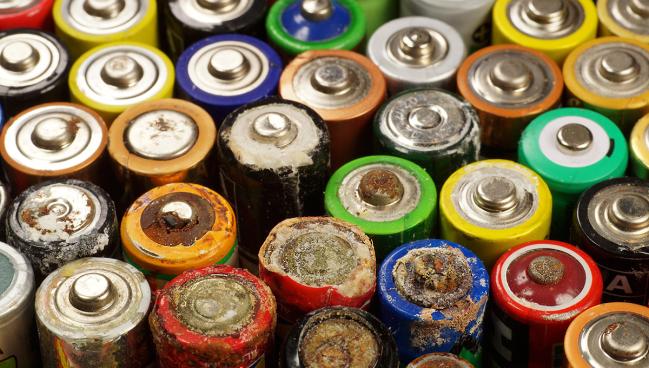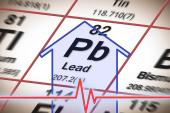High Levels of Metals, Particularly Cadmium, Linked to Subclinical CVD
The study reinforces the need to take the environment into account when focusing on CVD risk prevention, say experts.

Exposure to high levels of essential and nonessential metals, particularly cadmium, is associated with a greater amount of coronary artery calcification (CAC), according to an analysis of the Multi-Ethnic Study of Atherosclerosis (MESA).
High levels of urinary cadmium at baseline and over a 10-year follow-up period were associated with 51% and 75% more calcification when compared with low exposure to cadmium. Greater exposure to tungsten, uranium, and cobalt also correlated with higher CAC levels, report investigators led by Katlyn McGraw, PhD (Columbia University Mailman School of Public Health, New York, NY).
“Our strongest results were for cadmium, which already there's a lot of existing evidence [linking] cadmium with calcification in the arteries, as well as other cardiovascular risk factors and overt clinical outcomes,” said McGraw. “The strength of this study is that it was a longitudinal assessment, and we can really show evidence of the progression of calcification.”
McGraw emphasized that the study, published online recently in the Journal of the American College of Cardiology, assessed the link between CAC and some of the lesser studied metals, such as tungsten and uranium, which are also toxic, nonessential metals that don’t typically show up in the body.
In 2023, the American Heart Association (AHA) issued a scientific statement highlighting contaminant metals—lead, cadmium, and arsenic—as cardiovascular risk factors. These toxic metals have all been linked to subclinical atherosclerosis, coronary artery stenoses, and coronary calcification, and reducing exposure to pollutants, including these metals, represents an “important, modifiable component of CVD risk,” according to the AHA.
Gervasio Lamas, MD (Mount Sinai Medical Center, Miami Beach, FL), lead author of the AHA’s statement, praised the research group and the strength of the current study, highlighting it as the first to longitudinally assess the progression of CAC with exposure to various toxicants.
“I think that’s the first time that’s been shown in a definitive way,” Lamas told TCTMD. “It brings to mind to cardiologists that they need to understand the environment patients live in because it affects how they are going to develop atherosclerosis.”
Healthy Participants at Baseline
The study included 6,418 MESA participants without CVD who had six metals measured in their urine (nonessential: cadmium, tungsten, and uranium; essential: cobalt, copper, and zinc) between 2000 and 2002. All participants underwent cardiac CT to assess CAC at baseline and over a 10-year period. Unlike traditional CAC scans that use the Agatston score (CAC-AS) to assess calcification, the researchers used a spatially weighted score (CAC-SW), which is a more sensitive measure of CAC.
I think we need to have a more comprehensive view of the contributors to cardiovascular disease. Katlyn McGraw
At baseline, the median CAC-SW score was 6.3 and roughly half of participants had coronary calcification detected using the Agatston score (CAC-AS > 0). Calcification increased with age and was higher in males, white participants, and those with less education. Former smokers, those with diabetes, and those with hypertension had higher median CAC-SW scores.
Urinary metal levels were a little higher in females, Chinese participants, and those with less education. Additionally, across the six study sites, those from Los Angeles had higher urinary tungsten and cobalt, as well as slightly higher cadmium, cobalt, and copper levels. Cadmium levels were highest in current smokers.
Compared with those with the lowest cadmium levels, those in the highest quartile for urinary cadmium had higher levels of CAC-SW at baseline and at 10 years. There was a clear “dose-response” association between exposure and CAC-SW at baseline and 10 years with cadmium levels, say researchers. CAC-SW at baseline was 13% and 17% higher in those with the highest urinary levels of tungsten and uranium, respectively, and 45% and 39% higher, respectively, at 10-year follow-up when compared with those with the lowest levels (reference is quartile 1).
With essential metals, CAC-SW at baseline and 10 years was 29% and 47% higher in those with highest cobalt levels and 15% and 33% higher for those with highest copper levels. For zinc, CAC-SW at baseline and 10 years was 54% and 57% higher in those with highest urinary levels. Again, both comparisons are to patients with lowest levels in quartile 1.
“For the three essential metals, the dose-responses tended to be flat at lower levels and positive at higher levels, especially at 10 years,” say researchers. Also, with copper and zinc, the association with CAC-SW at baseline and 10 years was weaker after adjusting for clinical risk factors.
Akin to Diabetes, Smoking, and High LDL Cholesterol
Calcification associated with urinary metal levels at baseline and in follow-up was akin to that seen with traditional cardiovascular risk factors. For example, CAC-SW at baseline and 10-year follow-up was 27% and 59% higher, respectively, in smokers versus nonsmokers, 58% and 87% higher in participants with diabetes than in those without, and 19% and 17% higher in those with higher LDL cholesterol levels.
“The magnitudes of these associations are striking, as they are comparable to those observed for classical ASCVD risk factors,” write Sadeer Al-Kindi, MD (DeBakey Heart and Vascular Institute/Houston Methodist, TX), and colleagues in an accompanying editorial. “This suggests that metal exposure could be an underappreciated yet significant contributor to atherosclerosis risk and may constitute an important piece of the exposome puzzle.”
Lamas agreed. “The fact that the traditional risk factors had about the same change in the calcium score—it tells you [the adverse effects of toxic metals] are really quite powerful and that we’ve been closing our eyes to it for a long time,” he said.
The evidence is more firmly established with exposure to lead, cadmium, and arsenic and CVD risk, said Lamas, but there are also prior studies linking tungsten and cobalt. Data are mixed with copper and zinc, he said.
In terms of modifying the risks, Lamas said that people should purchase a water filter that can screen out heavy metals at a minimum. Chelation therapy—the intravenous administration of ethylenediaminetetraacetic acid (EDTA)—is approved to treat acute and chronic lead poisoning. As for the treatment of low-level heavy-metal toxicity, however, chelation therapy in post-MI patients with diabetes had no impact on hard clinical outcomes in the recent TACT2 trial.
From a policy perspective, city, state, and federal governments need to assess and establish safe levels for the community. While the Environmental Protection Agency has done a lot of work restricting environmental lead exposure, the same standards don’t apply to these other metals, said Lamas.
The editorialists make a similar plea. “The study provides additional support for the need of large-scale public health action to lower acceptable limits of metals in air and water and improve enforcement of metal pollution reduction, particularly in communities experiencing disproportionate exposures,” write Al-Kindi and colleagues. “Prior studies have emphasized that marginalized communities are more commonly exposed to metals and overall environmental hazards, which can be an important contributor to ASCVD disparities.”
To TCTMD, McGraw said that she would also like cardiologists and other clinicians to pay attention to environment contributors to cardiovascular disease.
“We focus a lot on prevention to reduce the prevalence and incidence [of disease] with traditional cardiovascular risk factors, such as lowering cholesterol, blood pressure, improving the diet, or increasing physical activity. Those are great, but I think we need to have a more comprehensive view of the contributors to cardiovascular disease.”
Michael O’Riordan is the Managing Editor for TCTMD. He completed his undergraduate degrees at Queen’s University in Kingston, ON, and…
Read Full BioSources
McGraw KE, Schilling K, Glabonjat RA, et al. Urinary metal levels and coronary artery calcification: longitudinal evidence in the Multi-Ethnic Study of Atherosclerosis. JACC. 2024;Epub ahead of print.
Al-Kindi S, Nasir K, Rajagopalan S. Elemental risk: role of metals in cardiovascular disease risk. JACC. 2024;Epub ahead of print.
Disclosures
- McGraw, Al-Kindi, and Lamas report no relevant conflicts of interest.





Ayhan Olcay